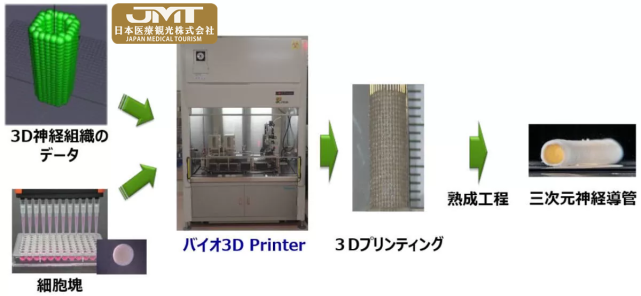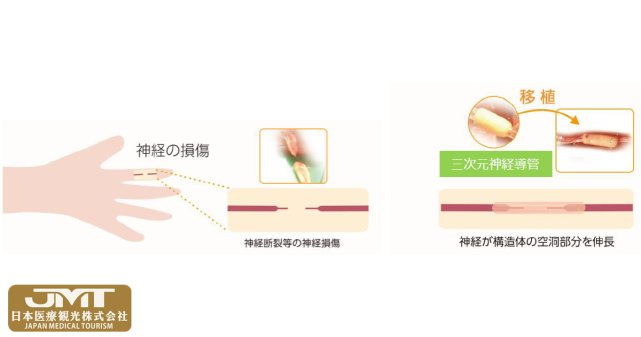On March 29, 2022, in January this year, Kyoto University in Japan announced that it had successfully developed a
biology3D printingmachine
Nerve regeneration technology as a new approach to peripheral nerve injury treatment.At the same time, announced plans to use the technology for
clinical
test.

This work was carried out by Kyoto University
medicine
Ministry Affiliated Hospital
orthopedics
Professor Shuichi Matsuda from the Department of Rehabilitation, Associate Professor Ryosuke Ikeguchi from the Department of Rehabilitation, Professor Tomoki Aoyama from the Department of Human Health Sciences in the Graduate School of Medicine, Peking University, and
medical
A collaborative research group at startup CYFUSE. The three related papers were published in the American online scientific journal “PLoS ONE”, the American medical journal “Journal of Reconstructive Microsurgery” and the medical journal “Cell Transplantation” which also involves regenerative medicine.
Currently, the main treatment for peripheral nerve injury is “autologous nerve transplantation,” which involves sacrificing the patient’s own healthy nerves. In order to perform treatment without sacrificing autologous nerves, artificial nerves are also being developed, but they have not yet achieved results superior to autologous nerve transplantation, so they have not been widely used.
Plastic surgery at Kyoto University Faculty of Medicine Hospital affiliated to Professor Matsuda
surgical
The use of artificial nerves to treat peripheral nerve damage is being studied. However, artificial nerves are said to lack cellular components and lack environmental factors such as cytokines necessary to guide regenerated axons, so that good results are not obtained compared with autologous nerve transplantation.
Against this background, Prof. Matsuda and his colleagues collaborated with
biology
3D printingThe first person in the field, Professor Koichi Nakayama of Saga University, and CYFUSE, a medical start-up company based on the technology developed by Professor Nakayama, conducted joint research.
use3D bioprintingUsing the technology, a three-dimensional nerve conduit made of only cells was transplanted into a mouse model of sciatic nerve injury, and the results were better than those of traditional artificial nerves and comparable to autologous nerve transplantation.Good induction of regenerated axons is thought to be through the release of cytokines and
Blood vessel
generated obtained, which led to this good result.
The Orthopedic Surgery Department of the Hospital of Kyoto University School of Medicine plans to conduct a doctor-led clinical trial of three-dimensional nerve catheter transplantation manufactured by a bio-SD printer for the traumatic peripheral nerve injury of the fingers.
Should
Operation
involves transplanting aBiological 3D PrinterA tubular (hollow structure) three-dimensional nerve guide made to connect a torn peripheral nerve. The torn nerve then regenerates and stretches within the three-dimensional nerve conduit, which eventually connects. After obtaining the consent of the clinical trial, the skin was collected from the patient’s abdomen or groin area, and a three-dimensional nerve conduit was fabricated and transplanted to the nerve injury site in about two months.

Various conditions such as traumatic peripheral nerve injury of the target finger are as follows.
・ Peripheral nerve rupture/defect due to trauma, etc. at the distal end of the wrist
・ Those within 6 months from the date of injury
・ Those who do not wish to undergo artificial nerve transplantation and autologous nerve transplantation
・ Men and women aged 20 to 60 when consent was obtained
Research in regenerative medicine continues to advance and is becoming more and more well known.for transplantation3D bioprintingMachine-made 3D nerve conduits for regenerative medicine are already in clinical trials. In the near future, it will become a common treatment available to anyone. The pain of not being able to move the fingers freely due to damage to the peripheral nerves, the pain left at the site where the nerve was extracted for autologous nerve transplantation, the pain that many people suffer, will be resolved in the near future.
(responsible editor: admin)


0 Comments for “Clinical trial of regeneration of damaged finger peripheral nerves using 3D bioprinter at Kyoto University Hospital in Japan”